John Hurrell – 16 December, 2013
If you are not so keen on researching historical minutiae but enjoy anyway the calculated play of surfaces, spaces, changed planes and inserted poles or rectangles - and the seeping 'contaminating' effect of spreading juxtaposed meaning, then Western's ‘Maurice K. Smith sampler' and Kennedy's interwoven images - as a hybrid meditation on one individual's manual and cognitive development, is essential viewing.
Auckland
Andrew Kennedy and Blaine Western
a hollow action, a room held together by letters
28 November - 21 December 2013. 14 January - 1 February 2014
This collaboration between Andrew Kennedy and Blaine Western is a complex installation that takes up the whole of the Artspace exhibiting area, a tightly conceived presentation that inventively slices through and repositions walls - and blocks off or accesses light to reveal murals or videos.
Western is highly regarded in Auckland for his meticulously constructed installations that focus on the history of modernist architecture in this country, and which often include documentation using film with slow tracking pans. Kennedy is less known, being more involved it seems with photography and performance. His ‘hollow action’ images - a sort of rehearsed or posed demonstration of manual skills - suspended in midair without walls, show an interest in transitive verbs (like say Serra, Smithson and Nauman) such as cutting, mixing or winding, actions which draw on manual skills essential for the manipulation of materials within the processes necessary to construct architecture.
In this ‘field’ of sculptural events there are sections where Kennedy and Western have their solo individual pursuits, and areas where they work together. The whole project involves scattered pockets of isolated sculptural, filmed, audio recorded, photographed or painted items that in Western’s case reference the Modernist architect Maurice K. Smith (b.1926) who left NZ in 1952 to study and eventually settle in the US.
The placement of all these components is exquisitely thought out. These elements include: a table of images and documents about Smith’s career; a fabulous wooden ‘sculpture’ set in a wall, the sculpture being in fact the boxing mould for a poured concrete relief mural (for Frith Concrete in Hastings); two parts of a painting mural from the corridor of Thompson House (executed by Rohan Hartley Mills); a video of a tiled mural in Auckland’s now closed Odeon Theatre; another video and audio recording of the Harry Turbott house in Karekare analysing the natural settings and sounds around it; and Western reading various accounts of Smith’s working methods as written by his colleagues.
With its various modified walls and suspended screens and images this is a particularly pleasurable show to walk through and around. Various peepholes and slots catch your eye as you circumnavigate the positioned rectangular obstacles, with lots of cross-connections linking painting with film frames or architectural plans; murals with textured surfaces; thinking via drawing with one’s own turning or interrupted body; and speed of approaching doorways with the steady tracking shots of Western’s videos. Not only on the horizontal level of the moving eye but occasionally above and below, with structured interventions into the floor and ceiling.
If you are prone to raptures about early Modernist architecture, there is plenty here to explore and ponder over in terms of the processes of New Zealand architectural history. If you are not so keen on researching minutiae but enjoy anyway the calculated play of surfaces, spaces, changed planes and inserted poles or rectangles - and the seeping ‘contaminating’ effect of spreading juxtaposed meaning, then Western’s ‘Maurice K. Smith sampler’ and Kennedy’s interwoven images - as a hybrid meditation on one individual’s manual and cognitive development, is a must-see, and a peak in Artspace’s programme.
If this quite brilliant collaborative show has one small weakness, it is occasionally a tad fiddly, with the ideological symbolism of wooden wedges (educational intervention), frames (historical recontextualising) and sheets of glass (undermining transparency) on the table a bit heavyhanded in its self conscious reflexivity - and Western’s voiced recording of commentaries sounding distractingly lugubrious. Overall though, this is a particularly refreshing use of the Artspace floorplan to introduce a significant architectural figure to a new audience: scattered fragments (each with its own letter and number) that each visitor can coalesce into their own interpretative whole; introducing for future reference sources of information that can sporadically later on be retrieved and re-examined.
John Hurrell
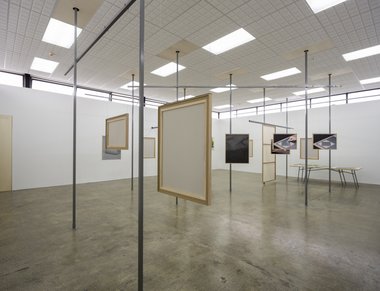
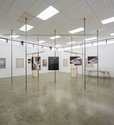
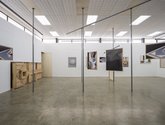
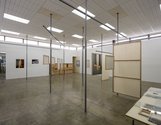

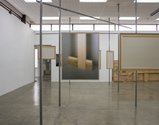
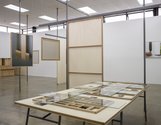
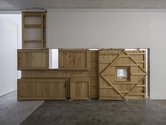

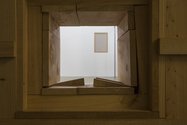
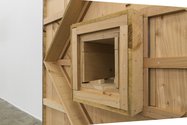
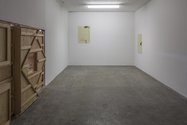
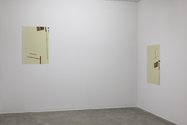
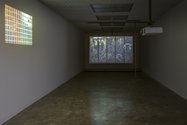

 Two Rooms presents a program of residencies and projects
Two Rooms presents a program of residencies and projects Advertising in this column
Advertising in this column



This Discussion has 0 comments.
Comment
Participate
Register to Participate.
Sign in
Sign in to an existing account.